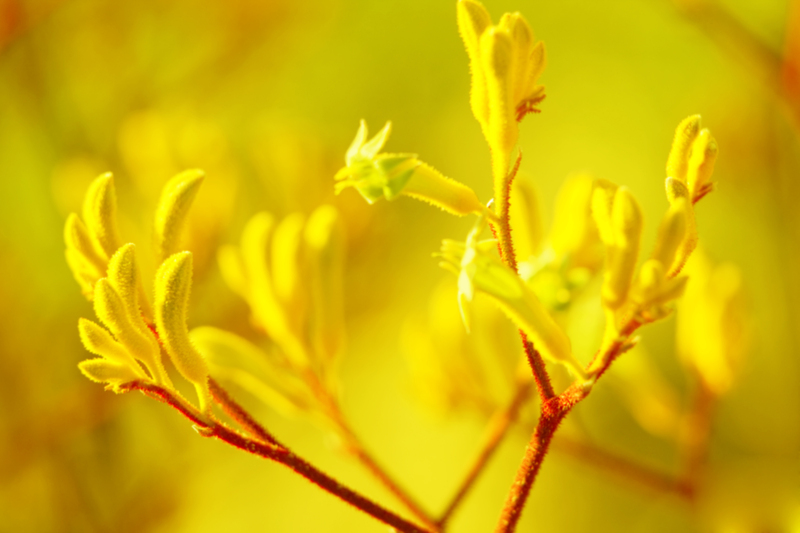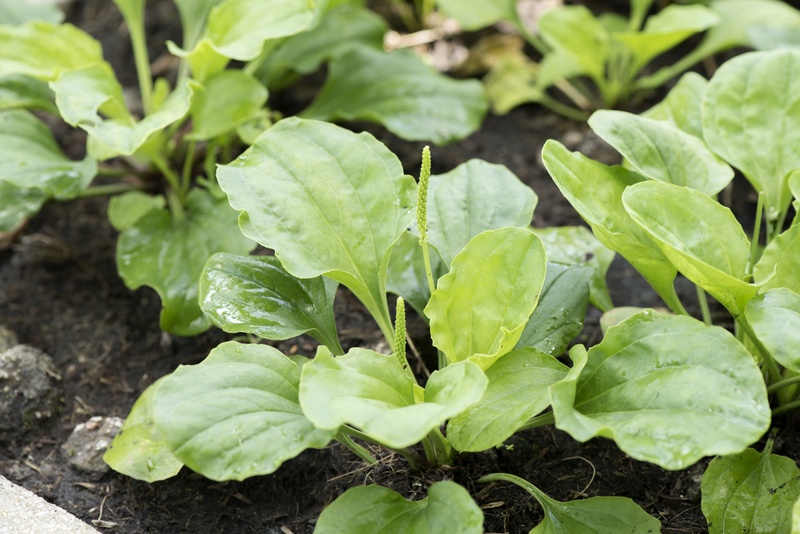Shaping Nature: A Guide to Hedge Trimming Creativity
Posted on 18/08/2025
Shaping Nature: A Guide to Hedge Trimming Creativity
Hedge trimming goes far beyond the basic maintenance of your garden's green boundaries. It's a unique blend of horticultural science and artistic expression -- a rewarding way to enhance your property's beauty and even your own well-being. This comprehensive guide explores the imaginative world of creative hedge trimming, offering practical techniques, inspiration, and tips for both beginners and experienced garden enthusiasts. Whether you have a sprawling estate or a cozy backyard, shaping nature through hedge artistry is within your reach.
Why Hedge Trimming Is More Than Just Maintenance
Most people view hedge trimming as a chore to keep their landscapes tidy. However, the practice offers exciting possibilities for those willing to think outside the box. With imagination, patience, and the right techniques, a simple green wall becomes a living canvas. From whimsical shapes to elegant lines and intricate topiary, hedge shaping invites you to express creativity in your outdoor spaces.
The Creative Benefits of Hedge Shaping
- Visual Interest: Artistic hedges add layers, textures, and focal points to your landscape.
- Personal Expression: The forms you craft can reflect your tastes--abstract, formal, or playful.
- Biodiversity: Carefully maintained hedges promote healthy plant growth and create wildlife habitats.
- Mental Wellness: Engaging in creative, hands-on gardening is known to reduce stress and boost mood.

The Fundamentals of Creative Hedge Trimming
Before picking up your shears, it's important to understand the principles behind effective and imaginative hedge trimming. From plant selection to essential care, these fundamentals set the stage for successful hedge artistry.
Best Hedging Plants for Creative Trimming
Not all shrubs are created equal for topiary or creative shapes. The ideal hedge plants:
- Have small leaves for precise cuts (e.g., Buxus sempervirens, or boxwood)
- Produce dense foliage for solid shapes
- Tolerate regular pruning and recover quickly
- Grow relatively slowly for better control
Popular species for creative trimming include:
- Boxwood (Buxus): Classic for formal and intricate shapes
- Yew (Taxus): Flexible and resilient, ideal for topiary
- Privet (Ligustrum): Fast-growing, easily shaped
- Holly (Ilex): Shiny leaves with year-round interest
- Lonicera (Honeysuckle): Great for informal, free-form designs
Mastering the Right Tools for Hedge Artistry
Investing in the correct hedge trimming tools will facilitate precision and make the process enjoyable:
- Hand Shears: Best for fine detailing and small hedges
- Powered Hedge Trimmers: Efficient for large sections and initial cuts
- Topiary Shears: Ideal for intricate topiary work
- Secateurs: For spot trimming and thick stems
- String, Stakes, and Templates: Helpful in maintaining symmetry and creating complex shapes
Techniques for Shaping Hedges with Creativity
Understanding technique is crucial for artistic hedge shaping. Even the most imaginative ideas benefit from a foundation in proper trimming methods.
The Basics: Cutting for Health and Structure
- Always use sharp tools to create clean cuts and minimize plant stress.
- Trim in late spring or early summer, when growth is vigorous but not excessive.
- Follow the tapered hedge principle: keep the base wider than the top for sunlight exposure.
- Remove dead, diseased, or crossing branches before shaping.
- Trim lightly and regularly to encourage dense growth and maintain form.
Creative Forms and Styles of Hedge Trimming
Explore these popular hedge trimming styles to ignite your creativity:
- Formal Hedges: Neat rectangles, squares, or rounded tops offer timeless elegance and work well as borders.
- Free-Form Hedges: Let the natural habit of the plant guide your hand--wavy lines, curves, and soft shapes integrate beautifully into cottage or wildlife gardens.
- Topiary: The art of sculpting living sculptures. Common shapes include spheres, cones, spirals, and even animals or abstract art.
- Espaliered Hedges: Train hedge plants along wires or frames to create flat, geometric patterns.
- Themed Designs: Craft messages, initials, garden labyrinths, or seasonal designs for added interest.
Getting Started with a Simple Topiary
- Choose your subject: Start with basic shapes like spheres, cubes, or cones.
- Mark your outline: Use string, wire, or mesh frames as guides for symmetry.
- Trim in stages: Remove large excess growth first, then gradually refine the silhouette with finer cuts.
- Step back often: Assess your work from different angles for balance and proportion.
- Maintain regularly: Touch up every few weeks during the growing season for crisp edges.
Advanced Techniques: Taking Creativity to the Next Level
- Multi-Plant Topiary: Combine different species for contrasting colors and textures.
- Layered Hedges: Create 3D effects by building up forms at different heights and depths.
- Living Archways: Train hedges over arched frames for dramatic entrances.
- Mobile Topiary: Grow sculpted shapes in large containers that can be repositioned in the landscape.
- Whimsical Designs: Experiment with animals, fantasy shapes, or garden mazes.
Hedge Trimming Inspiration: Showcases from Around the World
Throughout history and across cultures, hedge artistry has left a vibrant mark. Draw inspiration from these global landmarks:
- English Parterres: Intricate geometric hedges adorn the grand estates of England, such as those at Hampton Court Palace.
- French Formal Gardens: The gardens of Versailles feature precise, ornate hedging at grand scale.
- Japanese Gardens: Subtle cloud or wave-shaped hedges fit harmoniously within tranquil landscapes.
- Modern Art Gardens: Contemporary parks incorporate abstract, playful forms into their living boundaries.
Tips for Healthy, Long-Lasting Hedge Artistry
Hedge Trimming Best Practices for Wellbeing
- Water deeply during dry spells to avoid stress.
- Feed your hedges in spring with slow-release fertilizer to encourage lush growth.
- Protect new trims from harsh sun or frost.
- Monitor for pests and diseases, treating early to preserve form.
- Mulch at the base to conserve moisture and suppress weeds.
Common Challenges and How to Overcome Them
- Browning Leaves: May indicate over-trimming or fungal issues. Trim less, ensure good airflow, and address diseases promptly.
- Irregular Growth: Prune all sides evenly and use guides for symmetry. Rotate designs for different light exposures.
- Patchy Hedges: Fill gaps by guiding new shoots, or replant if necessary.
- Tool Fatigue: Keep blades sharp, and take breaks to check your handiwork and rest your hands.
Safe and Environmentally Friendly Hedge Trimming
Safety and sustainability should be key aspects in any hedge-shaping project:
- Wear gloves and eye protection against thorns and debris.
- Be mindful of nesting birds; avoid severe trimming during breeding seasons.
- Compost clippings or use them as mulch to recycle nutrients.
- Opt for manual or electric tools instead of gas-powered for reduced emissions.
Creative Hedge Trimming for Urban Gardens
Even in small or urban gardens, hedge shaping creativity dazzles. Try:
- Potted Topiary: Small spheres or spirals for patios and balconies.
- Mini-Hedges: Use dwarf or slow-growing species for miniature landscapes.
- Vertical Green Walls: Espaliered shrubs act as privacy screens and works of art.

Frequently Asked Questions About Shaping Hedges
What is the best time of year for creative hedge trimming?
Late spring to early summer is ideal for most species, as new growth is flexible and plants are less susceptible to frost or sunburn. Avoid heavy pruning during very hot or cold weather.
How often should I trim a hedge to maintain its shape?
For neat shapes or topiary, touch up every 4-6 weeks during the growing season. Free-form or informal hedges can be shaped less often, about 2-3 times per year.
Can I start creative hedge shaping with an old, overgrown hedge?
Yes! Hard pruning in stages, combined with feeding and mulching, often rejuvenates old hedges. Start with gentle reshaping and work towards creative forms as new shoots emerge.
Do I need professional help for advanced hedge art?
Professional topiary artists are invaluable for large, complex designs or mature landscapes. However, with research, patience, and practice, home gardeners can learn most techniques and achieve impressive results.
Conclusion: Unleash Your Creativity Through Hedge Shaping
Whether you're aiming for precise geometric forms, whimsical animals, or abstract designs, creative hedge trimming is a rewarding way to shape your natural world. It transforms the simple garden chore into an opportunity for artistic expression, mental relaxation, and ecological enrichment.
Ready to try your hand at creative hedge shaping? Start with a vision, nurture your hedge with care, and let your imagination guide the shears. The results--unique living sculptures that delight the senses and elevate your garden--await just outside your door!
If you found this guide on shaping nature through hedge artistry helpful, share your creations and tips with fellow gardeners. Every lush, green boundary can become a personal masterpiece with a little creativity and care.



